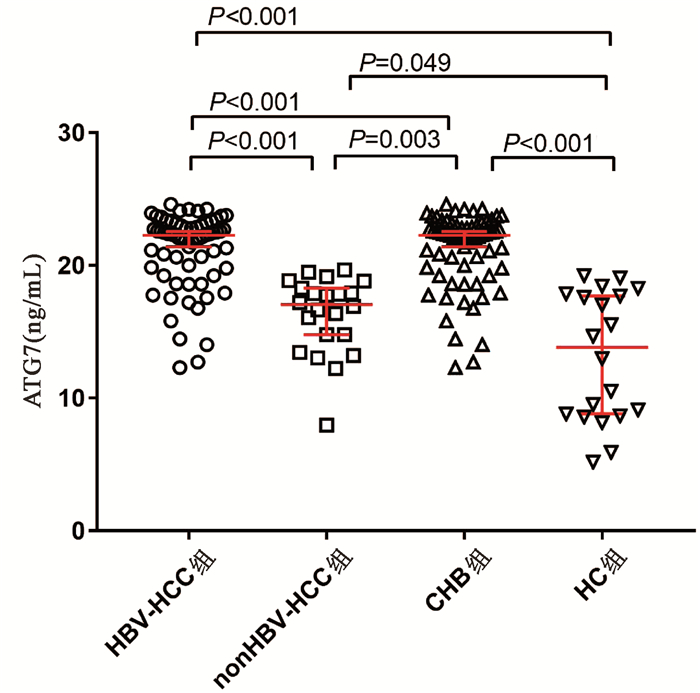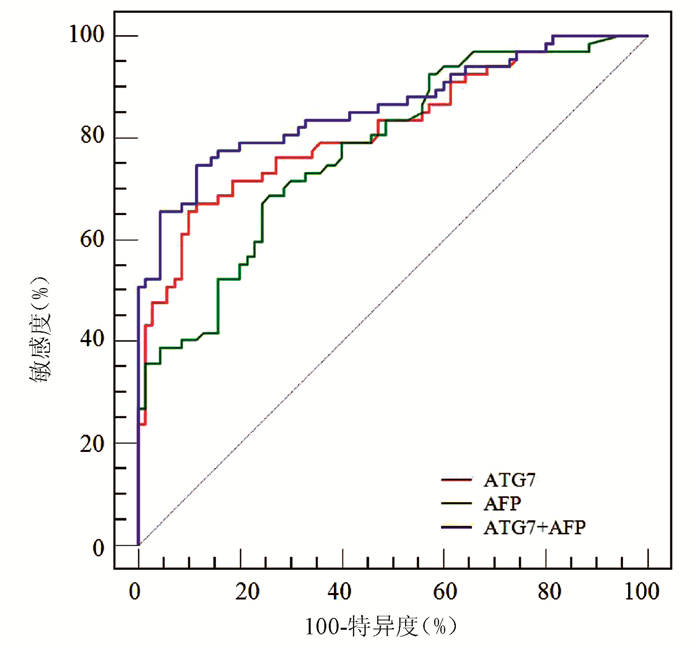|
[1] TESFAYE AA, AZMI AS, PHILIP PA. miRNA and gene expression in pancreatic ductal adenocarcinoma[J]. Am J Pathol, 2019, 189 (1) :58-70.
|
|
[2] STROBEL O, NEOPTOLEMOS J, JÃGER D, et al. Optimizing the outcomes of pancreatic cancer surgery[J]. Nat Rev Clin Oncol, 2019, 16 (1) :11-26.
|
|
[3] KAMISAWA T, WOOD LD, ITOI T, et al. Pancreatic cancer[J]. Lancet, 2016, 388 (10039) :73-85.
|
|
[4] de LIGUORI CARINO N, O'REILLY DA, SIRIWARDENA AK, et al. Irreversible Electroporation in pancreatic ductal adenocarcinoma:Is there a role in conjunction with conventional treatment[J]. Eur J Surg Oncol, 2018, 44 (10) :1486-1493.
|
|
[5] HERMANN PC, SAINZ B Jr. Pancreatic cancer stem cells:A state or an entity[J]. Semin Cancer Biol, 2018, 53:223-231.
|
|
[6] LIAO W, DU Y, ZHANG C, et al. Exosomes:The next generation of endogenous nanomaterials for advanced drug delivery and therapy[J]. Acta Biomater, 2018, 86:1-14.
|
|
[7] XU H, HAN H, SONG S, et al. Exosome-transmitted PSMA3and PSMA3-AS1 promotes proteasome inhibitors resistance in multiple myeloma[J]. Clin Cancer Res, 2019, 25 (6) :2363.
|
|
[8] MATHIEU M, MARTIN-JAULAR L, LAVIEU G, et al. Specificities of secretion and uptake of exosomes and other extracellular vesicles for cell-to-cell communication[J]. Nat Cell Biol, 2019, 21 (1) :9-17.
|
|
[9] CONIGLIARO A, CICCHINI C. Exosome-mediated signaling in epithelial to mesenchymal transition and tumor progression[J]. J Clin Med, 2018, 8 (1) :e26.
|
|
[10] PAN BT, TENG K, WU C, et al. Electron microscopic evidence for externalization of the transferrin receptor in vesicular form in sheep reticulocytes[J]. J Cell Biol, 1985, 101 (3) :942-948.
|
|
[11] ZHOU Y, REN H, DAI B, et al. Hepatocellular carcinomaderived exosomal miRNA-21 contributes to tumor progression by converting hepatocyte stellate cells to cancer-associated fibroblasts[J]. J Exp Clin Cancer Res, 2018, 37 (1) :324.
|
|
[12] KHARE D, OR R, RESNICK I, et al. Mesenchymal stromal cell-derived exosomes affect mRNA expression and function of B-lymphocytes[J]. Front Immunol, 2018, 9:3053.
|
|
[13] FENG M, ZHAO J, WANG L, et al. Upregulated expression of serum exosomal microRNAs as diagnostic biomarkers of lung adenocarcinoma[J]. Ann Clin Lab Sci, 2018, 48 (6) :712-718.
|
|
[14] MASSOUMI RL, HINES OJ, EIBL G, et al. Emerging evidence for the clinical relevance of pancreatic cancer exosomes[J].Pancreas, 2019, 48 (1) :1-8.
|
|
[15] MAZIVEYI M, DONG S, BARANWAL S, et al. Exosomes from Nischarin-expressing cells reduce breast cancer cell motility and tumor growth[J]. Cancer Res, 2019.[Epub ahead of print]
|
|
[16] KAJIWARA C, FUMOTO K, KIMURA H, et al. p63-dependent Dickkopf3 expression promotes esophageal cancer cell proliferation via CKAP4[J]. Cancer Res, 2018, 78 (21) :6107-6120.
|
|
[17] CHEN L, YOU C, JIN X, et al. Cytoskeleton-associated protein 4 is a novel serodiagnostic marker for esophageal squamous-cell carcinoma[J]. Onco Targets Ther, 2018, 11:8221-8226.
|
|
[18] IGBINIGIE E, GUO F, JIANG SW, et al. Dkk1 involvement and its potential as a biomarker in pancreatic ductal adenocarcinoma[J]. Clin Chim Acta, 2019, 488:226-234.
|
|
[19] KIKUCHI A, FUMOTO K, KIMURA H. The Dickkopf1-cytoskeleton-associated protein 4 axis creates a novel signalling pathway and may represent a molecular target for cancer therapy[J]. Br J Pharmacol, 2017, 174 (24) :4651-4665.
|
|
[20] KIMURA H, YAMAMOTO H, HARADA T, et al. CKAP4, a DKK1receptor, is a biomarker in exosomes derived from pancreatic cancer and a molecular target for therapy[J]. Clin Cancer Res, 2019, 25 (6) :1936-1947.
|
|
[21] KITAGAWA T, TANIUCHI K, TSUBOI M, et al. Circulating pancreatic cancer exosomal RNAs for detection of pancreatic cancer[J]. Mol Oncol, 2019, 13 (2) :212-227.
|
|
[22] KINOSHITA-KAWADA M, HASEGAWA H, HONGU T, et al.A crucial role for Arf6 in the response of commissural axons to Slit[J]. Development, 2019, 146 (3) :dev172106.
|
|
[23] LIN JS, JEON JS, FAN Q, et al. ARF6 mediates nephrin tyrosine phosphorylation-induced podocyte cellular dynamics[J]. PLo S One, 2017, 12 (9) :e0184575.
|
|
[24] LI R, PENG C, ZHANG X, et al. Roles of Arf6 in cancer cell invasion, metastasis and proliferation[J]. Life Sci, 2017, 182:80-84.
|
|
[25] LIANG C, QIN Y, ZHANG B, et al. ARF6, induced by mutant Kras, promotes proliferation and Warburg effect in pancreatic cancer[J]. Cancer Lett, 2017, 388:303-311.
|
|
[26] MELO SA, LUECKE LB, KAHLERT C, et al. Glypican-1 identifies cancer exosomes and detects early pancreatic cancer[J]. Nature, 2015, 523 (7559) :177-182.
|
|
[27] DIAMANDIS EP, PLEBANI M. Glypican-1 as a highly sensitive and specific pancreatic cancer biomarker[J]. Clin Chem Lab Med, 2016, 54 (1) :e1-e2.
|
|
[28] ZHOU CY, DONG YP, SUN X, et al. High levels of serum glypican-1 indicate poor prognosis in pancreatic ductal adenocarcinoma[J]. Cancer Med, 2018, 7 (11) :5525-5533.
|
|
[29] LAI X, WANG M, McELYEA SD, et al. A microRNA signature in circulating exosomes is superior to exosomal glypican-1levels for diagnosing pancreatic cancer[J]. Cancer Lett, 2017, 393:86-93.
|
|
[30] OSTEIKOETXEA X, BENKE M, RODRIGUEZ M, et al. Detection and proteomic characterization of extracellular vesicles in human pancreatic juice[J]. Biochem Biophys Res Commun, 2018, 499 (1) :37-43.
|
|
[31] ZHANG Y, HUANG S, LI P, et al. Pancreatic cancer-derived exosomes suppress the production of GIP and GLP-1 from STC-1 cells in vitro by down-regulating the PCSK1/3[J].Cancer Lett, 2018, 431:190-200.
|
|
[32] Pancreatic Cancer Committee of Chinese Anti-Cancer Association. Comprehensive guidelines for the diagnosis and treatment of pancreatic cancer (2018 version) [J]. J Clin Hepatol, 2018, 34 (10) :2109-2120. (in Chinese) 中国抗癌协会胰腺癌专业委员会.胰腺癌综合诊治指南 (2018版) [J].临床肝胆病杂志, 2018, 34 (10) :2109-2120.
|
|
[33] ZHAO X, REN Y, CUI N, et al. Identification of key microRNAs and their targets in exosomes of pancreatic cancer using bioinformatics analysis[J]. Medicine (Baltimore) , 2018, 97 (39) :e12632.
|
|
[34] LI N, ZHAO X, YOU S. Identification of key regulators of pancreatic ductal adenocarcinoma using bioinformatics analysis of microarray data[J]. Medicine (Baltimore) , 2019, 98 (2) :e14074.
|








 下载:
下载:









 DownLoad:
DownLoad: